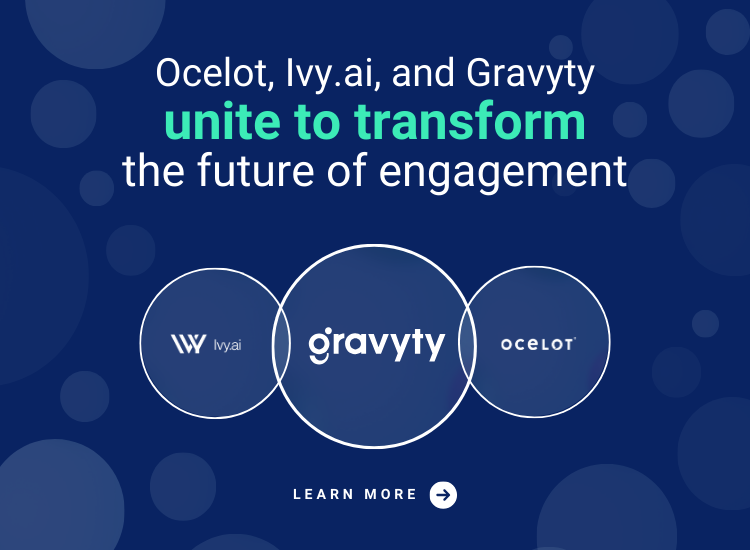The challenge of student engagement is not new. However, in today’s fiscally strained and increasingly virtual environment, it has become more important than ever for colleges and universities to implement student engagement strategies and innovative technologies to drive 24/7 virtual support and communication.
Once those strategies and tools are implemented, it is just as critical that institutions measure student engagement, learn from the data, and take action on it. Here’s our quick guide on how to accomplish just that!
Why Is Student Engagement Important in Higher Education?
Effective student engagement is important in higher education because it can go a long way toward building strong relationships between students and an institution — and as higher education experts know, a strong connection between a student and their college or university is a major indicator for student retention.
The best type of engagement is a two-way dialogue where institutions are actively reaching out to students and students are armed with the channels they need to ask questions around the clock. Two-way engagement allows students can better understand how the institution operates, and it also enables the institution to better understand the unique needs and goals of it’s student body.
Challenges to Student Engagement
The pandemic disrupted traditional in-person learning and services, which made a significant impact on student engagement as we knew it. This disconnection then lead to a decline in student enrollment and retention.
The National Student Clearinghouse reports that there was a “marked decline” in the first-year persistence rate in the Fall of 2020, after remaining stable for the past four years.
It is notable that community colleges felt the biggest retention impact from the pandemic. According to the data: retention fell 2.1 percentage points to 51.6% in the Fall 2020.
Additionally, students are unfortunately unsatisfied with their higher education experience, with 45% saying that their institution does not support their individual needs and 55% saying that they doubt whether their higher education is worth the cost.
What Are Some Key Indicators of Student Engagement?
Institutions that face an “engagement gap” with a subset of students — whether it’s apathy about certain courses and coursework, reticence to participate in college events and activities, shifting student attitudes toward college, disruptions to student schedules or unresponsiveness to college outreach around student support — understand that “closing the engagement gap” can go a long way toward boosting student enrollment, retention, and ultimately, institutional success.
With an increased emphasis on student engagement comes the urgency to measure it. Answers to questions like the following can be revealing in how colleges and universities can better engage them along their educational journey…
- Are students attending their classes?
- Are they earning good grades?
- Are they interacting with classmates in discussion and study groups?
- Are they completing registration, financial aid, and other administrative paperwork in a timely fashion?
- Are they responding to the college’s outreach?
- Are they giving student support offices high marks for service?
- How often do students contact the college?
- How often is the college contacting students?
- When the institution contacts students, are they responding?
- What is the response rate?
- Are the outreach touch points leading to completion of tasks?
- What channels of communication do students use?
- Are those channels increasing/decreasing in usage over time, or at various points during the semester?
How to Measure Student Engagement in a Digital World
Institutions can measure student engagement by taking a close look at the data from their interactions with students. The data can come in a variety of forms:
- Statistics from usage
- Surveys
- Anecdotal interviews
- Case studies
- And more
The goal is to gather a comprehensive understanding of student needs so that support staff can focus their time and energy in the most efficient ways possible.
The data from all of these interactions can reveal a lot about what is on students’ minds, challenges they face, and the help they need the most. The data can reveal significant trends. The data can provide actionable insights into how best to structure processes, work-flows and staffing. The data can inform which students are at greatest risk of persisting, and enable the institution to focus more resources and attention on these students.
Remember, it’s not all about technology. Yes, with digital tools, capturing data is easier than other, more traditional interactions. Yet, tracking in person meetings with advisors, with front line staff, as well as phone calls and emails, can be quite powerful, and will provide a comprehensive view of engagement.
Lighting the Torch on Engagement: St. Petersburg College
St. Petersburg College provides students with a variety of communication channels to contact the institution, and does an excellent job of tracking all forms of student interactions with the school. St. Petersburg College tracks interactions across various channels: in-person, phone calls, emails, texts, videos watched, online support and an AI chatbot, powered by Ocelot.
By having multiple channels of communication available for students, St. Petersburg College was able to accommodate student preferences as the pandemic hit in the spring of 2020. Over the course on the recent digital transformation, their Chatbot (“Pete”) moved from the 3rd most used channel to #1 as the institution transitioned to more virtual-centric support (an increase of 598% in April 2020!).
More recently, targeted two-way text messages powered by the Ocelot Platform have encouraged students to take an action (eg., enroll in classes, pay a bill, complete the FAFSA).
Recently, 14,700 enrollment related texts were sent. 96.3% were successfully received and only1.9% opted out. After 5 days, 12.4% students had enrolled in 14,500 credit hours for $1.6M in tuition revenue.
St. Petersburg College is demonstrating how combining technology and content (through the videos and the SMS text campaigns) can drive a 360-degree communication approach. Also, St. Petersburg is leveraging these tools to integrate with their Student Information System (SIS) to provide students with a more personalized experience, which drives greater ROI across platforms campus-wide.
St. Petersburg College’s story shows Ocelot’s provent Student Engagement Framework, the Student Engagement Flywheel, in action! Want to learn more about this game changing student engagement strategy? Click here!
The Wrap
Today’s students expect (and need) 24/7 engagement. Colleges and universities must measure their performance on this key indicator. The proverbial “elephant in the room” is that schools face fiscal pressures that are pushing them to get “leaner” rather than “more generous” when it comes to investing in student support. Affordable and efficient tools, such as AI-powered Chatbots and Text Campaigns, are a practical solution to this challenge. They can drive a very high ROI around engagement, especially if they are system agnostic and can plug into other existing systems such as the SIS or CRM. When paired with other content such as online explainer videos, these tools are proving to be the sort of solution that can enable colleges to scale greater student engagement, and focus their most impactful 1:1 efforts on the students most at-risk of dropping out and not persisting with their educational journey.








